
Preparing Your Home for Waterproofing Service
June 28, 2023
Roof Waterproofing vs Roof Repairs
September 30, 2023Waterproofing Maintenance: Tips to Keep Your Property Well-Protected

Waterproofing Maintenance Tips to Keep Your Property Well-Protected
Waterproofing Maintenance: Tips to Keep Your Property Well-Protected. Waterproofing systems play a crucial role in safeguarding properties against potential water damage.
Whether you reside in a tropical paradise like Singapore or any other region, proper waterproofing maintenance is essential to ensure the longevity and reliability of these systems.
This comprehensive guide will delve into the key aspects of waterproofing maintenance that can help you protect your property well.
From understanding the degradation of materials to addressing plumbing issues and adopting seasonal care, this article offers valuable insights to homeowners seeking to secure their investments.
Read on – Waterproofing Maintenance: Tips to Keep Your Property Well-Protected
The Lifespan of Waterproofing Solutions
Understanding Degradation
Waterproofing materials, while effective, are subject to degradation over time. Factors such as weather conditions, usage patterns, and the passage of time contribute to the breakdown of these materials. The relentless forces of nature, including rainfall and humidity, can gradually weaken the integrity of waterproofing systems. Additionally, the usage of the property, foot traffic, and external pressures can accelerate wear and tear.
The Impact of Weather, Usage, and Time
In Singapore’s tropical climate, properties are exposed to high humidity levels and frequent rainfall, which can challenge the durability of waterproofing solutions.
Without proper maintenance, these materials can deteriorate rapidly, compromising their ability to prevent water infiltration. Regular inspection and assessment are crucial to identifying signs of degradation and taking timely action to extend the lifespan of waterproofing systems.
Regular Inspection and Assessment
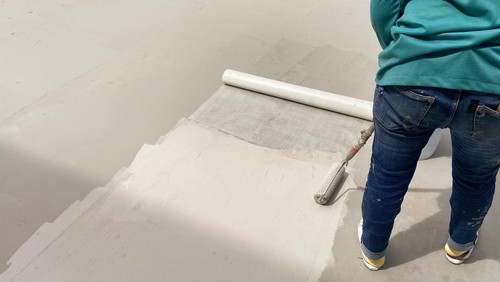
Scheduled Check-ups
Establishing a routine for waterproofing inspections is a proactive measure to prevent potential issues from escalating.
Regular check-ups allow you to identify signs of wear, damage, or weakening early on. Look for telltale signs such as cracks, peeling, or discoloration in waterproofing materials.
These visual cues can provide valuable insights into the condition of your property’s protective layers.
Professional Assessment
Engaging experts to evaluate your property’s waterproofing systems thoroughly can uncover hidden issues that might not be apparent during routine inspections.
Professionals have the experience and knowledge to identify underlying problems that require attention. Their insights can help you take targeted actions to address vulnerabilities and maintain the integrity of your property’s waterproofing.
Maintaining Exterior Waterproofing
Clearing Debris and Blockages
Preventing water accumulation and potential leaks begins with maintaining a clear exterior.
Regularly cleaning gutters, downspouts, and drainage systems helps ensure that water can flow freely away from your property.
Accumulated debris and blockages can impede the proper drainage of rainwater, leading to pooling and potential damage.
Ensuring Proper Sloping and Grading
Verifying that the land slopes away from the foundation is a simple yet effective measure to prevent water pooling and seepage.
Proper sloping ensures that rainwater naturally flows away from the property rather than accumulating around the foundation.
This can significantly reduce the risk of water infiltration and subsequent damage.
Caring for Interior Waterproofing
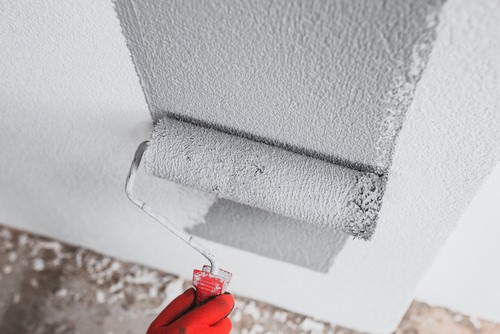
Sump Pump Maintenance
Sump pumps are essential components of interior waterproofing systems, especially during heavy rainfall.
Regularly checking the functionality of the sump pump and cleaning debris that might obstruct its operation is crucial.
A well-maintained sump pump is better equipped to handle excess water and prevent flooding in basements and crawlspaces.
Sealing Cracks and Joints
Cracks and joints in walls and floors can be entry points for moisture, compromising the interior waterproofing of your property.
Regularly inspecting and promptly repairing any cracks is essential to prevent moisture from infiltrating the interior spaces.
Sealing these openings helps maintain a dry and comfortable indoor environment.
Addressing Plumbing Issues
Fixing Leaky Pipes
Leaky pipes are a common source of water damage in properties. Promptly addressing leaks and repairing damaged pipes can prevent water from seeping into walls, floors, and other structures.
Regular inspections of plumbing fixtures, such as faucets and toilets, help identify leaks before they lead to more extensive issues.
Managing Condensation
Humid climates can lead to condensation buildup on surfaces, contributing to dampness and potential mold growth.
Using dehumidifiers strategically can help control excess moisture and create a healthier indoor environment. These devices extract moisture from the air, reducing the risk of water-related problems.
Protective Coatings and Sealants
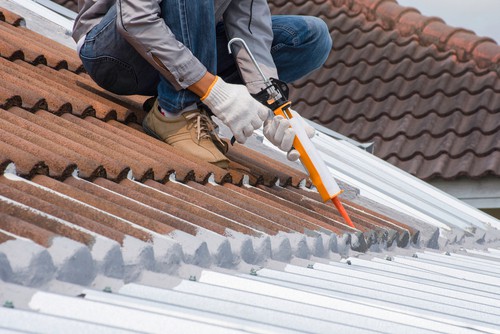
Periodic Reapplication
Protective coatings and sealants applied to various surfaces require periodic reapplication to maintain their effectiveness.
Regularly checking the condition of existing coatings and assessing whether they require renewal is important. Reapplying coatings as needed helps create a reliable barrier against water infiltration.
Ensuring Proper Coverage
When applying sealants, ensuring even and thorough coverage is essential. Properly applied sealants create an effective barrier against water infiltration. Whether you’re sealing gaps in walls, windows, or roofs, meticulous application helps prevent water from entering your property.
Landscaping Considerations
Maintaining Vegetation
Landscaping plays a role in maintaining proper drainage around your property. Trim plants near foundation walls to prevent foliage from holding moisture against surfaces. Well-maintained landscaping reduces the risk of water accumulation and potential infiltration.
Directing Rainwater Flow
Implementing landscaping techniques that guide rainwater away from the property is an effective preventive measure.
Properly designed slopes and pathways direct rainwater toward drainage systems and away from vulnerable areas. By managing rainwater flow, you can minimize the chances of water-related issues.
Keeping Records
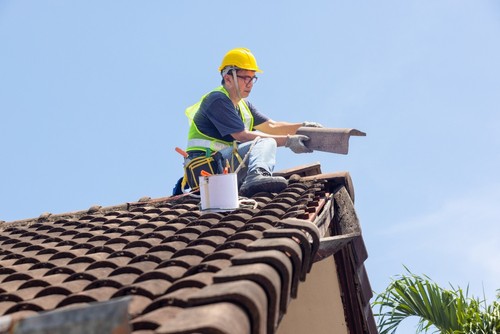
Maintenance Log
Documenting inspection dates and findings in a maintenance log records the state of your property’s waterproofing systems.
Tracking repairs, actions taken, and observed issues helps you stay organized and informed about the maintenance history of your property.
Professional Recommendations
Listening to recommendations provided by waterproofing experts is crucial for maintaining the effectiveness of your property’s waterproofing systems.
Implementing suggested improvements and following expert advice can significantly enhance the longevity and performance of these systems.
Seasonal Waterproofing Care
Adapting to Singapore’s Climate
Considering the unique climate of Singapore, characterized by high humidity, heavy rains, and the potential for flooding, adapting your maintenance strategies is essential. Seasonal adjustments should include preparations for increased moisture and rainfall during the wetter months.
Frequently Asked Questions (FAQs)
Q: How often should I schedule waterproofing inspections?
A: It’s recommended to schedule waterproofing inspections at least once a year, with additional checks after heavy rainfall or significant weather events.
Q: Can I perform waterproofing maintenance, or should I hire professionals?
A: While some maintenance tasks can be handled by homeowners, engaging professionals for thorough evaluations and complex repairs is advisable to ensure the effectiveness of your waterproofing systems.
Q: What are the signs of water damage on my property?
A: Signs of water damage include discoloration, peeling paint, mold growth, musty odors, and visible cracks in walls and floors.
Q: How can I prevent water accumulation around my property’s foundation?
A: Ensure proper sloping and grading of the land to direct water away from the foundation. Regularly clean gutters, downspouts, and drainage systems to prevent blockages.
Q: Are protective coatings and sealants effective in waterproofing?
A: Yes, protective coatings and sealants create barriers against water infiltration. Regular reapplication and proper coverage are essential for their effectiveness.
Q: Is interior waterproofing as important as exterior waterproofing?
A: Yes, interior waterproofing is equally important. Properly functioning sump pumps, sealed cracks, and addressed plumbing issues contribute to comprehensive waterproofing.
Waterproofing Maintenance: Tips to Keep Your Property Well-Protected – Conclusion
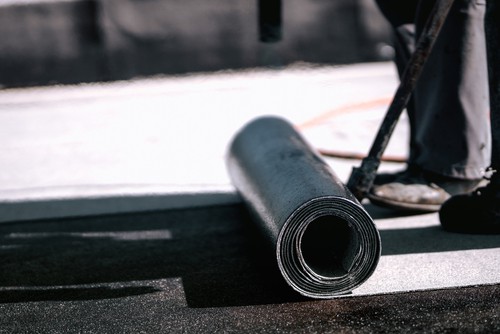
Maintaining waterproofing systems is a fundamental responsibility for property owners, particularly in regions with demanding climates like Singapore.
Adopting a proactive approach to waterproofing maintenance can prevent potential water damage and extend the lifespan of your property’s protective systems.
Regular inspections, addressing plumbing issues, and applying protective coatings are crucial to effective waterproofing care.
Whether you’re safeguarding a residential or commercial property, these strategies will help you keep your investment well-protected for years.
Are you looking for professional and reliable waterproofing services in Singapore? Contact us today!

